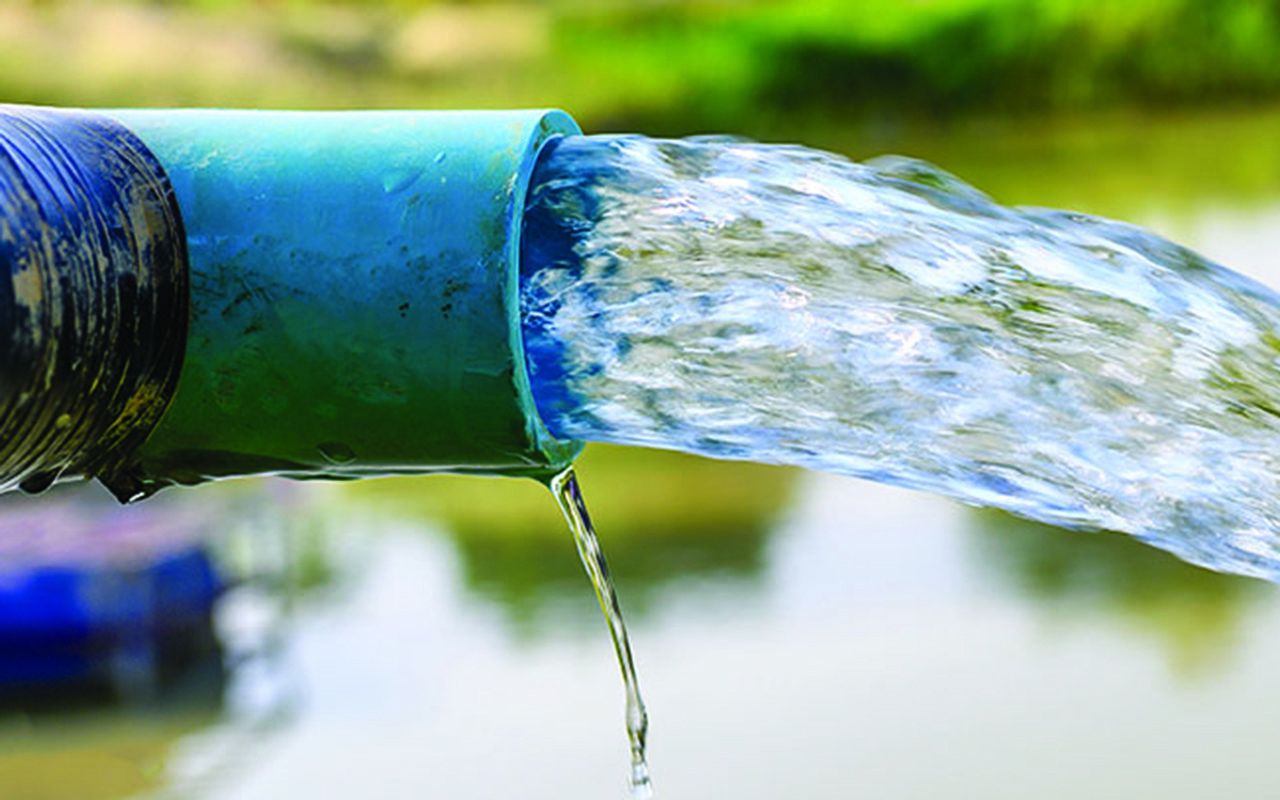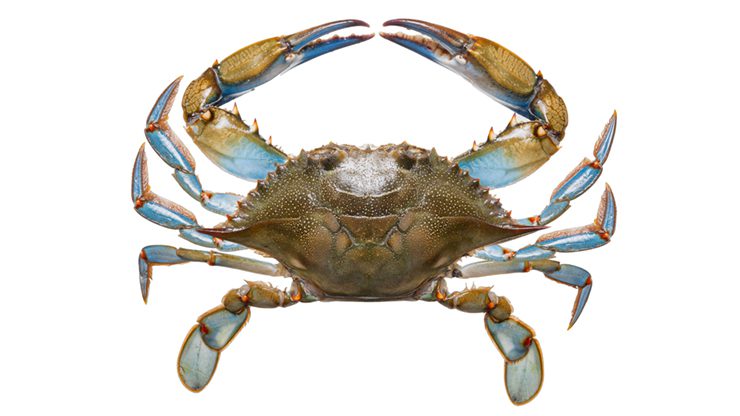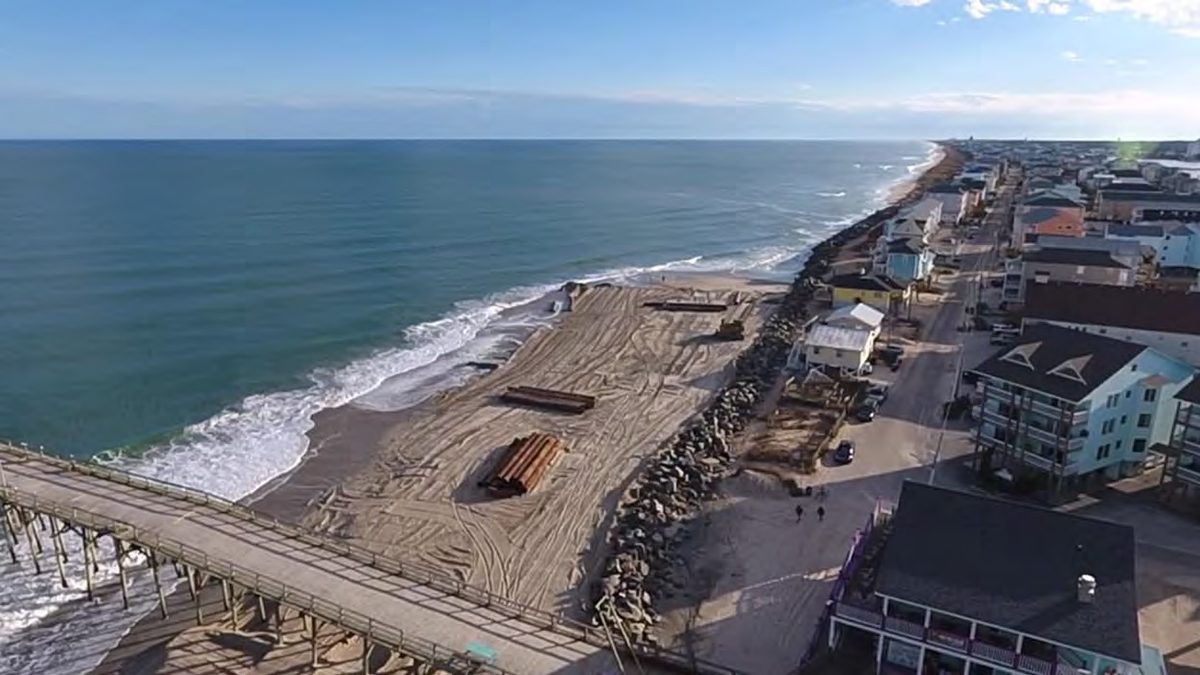From Graveyard of the Atlantic Museum
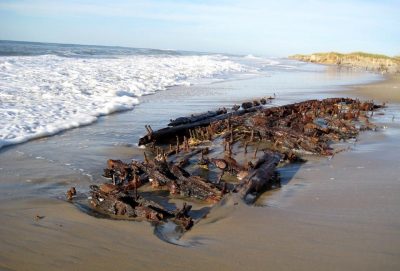
One never knows what will be uncovered on the Outer Banks beaches. This month, it was a wreck on the beach directly across from the Wreck Tiki Bar and Food in Hatteras Village.
Supporter Spotlight
Charlie Hornfeck from the restaurant, named after his passion for wrecks, came across the fascinating wreckage this month about 136 years after the “possible” ship stranded about a mile and a half south of Durant’s Station near Hatteras Inlet.
He photographed the wreck, with his photos appearing online in state and national papers. Assistant State Archaeologist Nathan Henry with North Carolina’s Underwater Archaeology Branch says the wreckage may have come from Dulcimer, an English bark that stranded at half past 5 in the morning Feb. 12, 1883, due to foggy weather.
“Our office has been monitoring shipwrecks on the Outer Banks since the 1970s, but as the dunes erode newly exposed shipwreck fragments appear,” Henry wrote in a recent email.
“This is one of them. Keep in mind, one ship breaking up on the outer bar could and did produce many fragments, some of them immense.” Henry targets this ship as the possible origin of the wreckage due to where it washed up as well as its construction.
“Just looking at the gross construction, it is obvious a tremendous number of iron fasteners were used to hold the components together,” he says. “This suggests ship construction techniques common in the later 19th and early 20th century. During this period commercial wooden vessels were becoming much larger to accommodate greater cargoes.
Supporter Spotlight
The larger vessels, while being more efficient were pushing the limits for which wooden vessels could be built and still be structurally sound. Liberal use of iron and wooden fasteners was one answer to this issue. Building ships solely from iron and steel alleviated those constraints.”
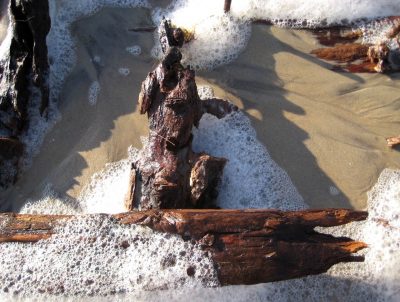
The United States Lifesaving Service Report of 1883 states that the ship, bound from Pernambuco, Brazil to New York, with a cargo of sugar, was discovered at 6 a.m. by the station patrol.
The crew of 11 commanded by Capt. McDowell, were rescued using the Lyle gun and breeches buoy. The ship was turned over to the wreckers who were engaged in stripping her. The seas became worse in the afternoon and the four men in the wrecking crew had to be rescued from the ship using one of the bark’s boats.
“Is the wreck fragment on the beach at Hatteras from Dulcimer?” asked Henry. “Maybe. If not, the scenario was probably equally dramatic and hopefully the lifesavers were equally successful.”
David Stick, author of “Graveyard of the Atlantic, Shipwrecks of the North Carolina Coast,” noted in his book that the site of the wreck has long been considered a great spot on the Atlantic coast for catching channel bass. He suggested that all that melting sugar from the cargo possibly sweetened the water.



